Before and after Covid-19
<p>Current generations will remember 2020 as the year everything changed. People confined to their homes, industries at minimum production levels, hospitals overflowing, borders closed and, in general, a world put on pause by the whims of a virus that popped up almost overnight. The BioRegion wasn’t spared this abnormality, but as the healthcare and life sciences sector is strategic and essential to managing the pandemic, the revolution in this case brought out the best of the sector to fight the virus.</p>

SARS-CoV-2 has forced all of us to adapt to new formulas for production, work and relationships. Some of these adaptations, like hospital contingency plans, have been put away in a drawer in the hopes they won’t ever have to be used. But in other cases, “the pandemic has taught us not only what to do, but what not to do,” explains Global Head of Innovation and Pipeline Management at Reig Jofre Isabel Amat.
With one eye on upcoming summer vacations and the other on new spikes around the region, we spoke with several stakeholders in the BioRegion to find out how the pandemic has affected their activity and, above all, what they hope we will have learned if it all starts up again, be it in 15 days, 3 months or 10 years.
Team management
The idea of leaving the office on a Thursday evening and having the coffee cup on your desk turn into an ecosystem of its own took us by surprise. It worked out well for Alexander Fleming, because they say this is how he discovered penicillin. But in this case, it wiped out all direct contact between colleagues basically overnight. “You lose some of the spontaneity that you have when you work face to face, but it also empowers the teams, builds confidence,” Amat recognizes.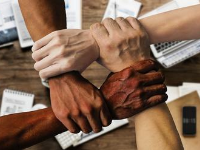
“The first challenge was to keep the team cohesive and motivated while they were working in an emotional setting that wasn’t very favorable,” explains Aelix Therapeutics CEO José Luis Cabero. “In the beginning, there was something romantic about it, because we saw each other more often online and that had an interesting effect on bringing the team together. But then came the challenges, because as time wore on we all became more sensitive,” he adds. At that point, they decided to kick off some team-building initiatives, with more personal weekly meetings: each member could share how they were feeling and managing the situation on a personal level, and they shared recommendations for music, books and entertainment in general. “Paradoxically, we’ve gotten to
know each other better virtually,” Cabero says.
The situation was very different for Laura Lechuga, head of the Nanobiosensors and Bioanalytical Applications Group at the Catalan Institute of Nanoscience and Nanotechnology (ICN2), who is leading the CONVAT project to develop a new device based on optical biosensor nanotechnology to detect the coronavirus in 30 minutes. Hers was the only group at the center that wasn’t locked down, because they were awarded the project on March 2 and started working on March 10. “We’ve been under a lot of pressure, media exposure and stress, and in very unusual security conditions, above all in the early days when we were all alone and had to take extra precautions when nothing was even clear yet,” she tells. On the other hand, thanks to the new funding, the group has grown from 12 to 17 people during the pandemic. “We’ve been able to hire and keep talent in Catalonia. They were people worried about finding work in these circumstances. So, it’s not only a great opportunity for them, but also a relief,” she says, satisfied.
New projects during the state of emergency, too
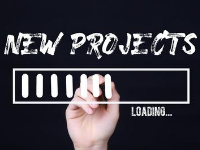 Lechuga’s isn’t the only example of the opportunities that can (also) come out of a pandemic. “We’ve started up a company in the midst of the crisis,” shares Luis Serrano, director of the Center for Genomic Regulation. We signed during the first week of lockdown and from there, a new CRG spin-off, Pulmobiotics, was born, with €2 million in funding from Invivo Capital to develop vaccines and treatments for respiratory diseases. The state of emergency slowed everything down a month, and the team got to work on June 1. “If it had been a start-up that was already up and running and the lockdown came 9 months in, it would have been worse,” Serrano concedes.
Lechuga’s isn’t the only example of the opportunities that can (also) come out of a pandemic. “We’ve started up a company in the midst of the crisis,” shares Luis Serrano, director of the Center for Genomic Regulation. We signed during the first week of lockdown and from there, a new CRG spin-off, Pulmobiotics, was born, with €2 million in funding from Invivo Capital to develop vaccines and treatments for respiratory diseases. The state of emergency slowed everything down a month, and the team got to work on June 1. “If it had been a start-up that was already up and running and the lockdown came 9 months in, it would have been worse,” Serrano concedes.
For her part, Amat believes in the positive results of the trial started in July on probiotic Manremyc, from the eponymous company founded in 2013 to develop and market the inactivated M. manresensis bacillus to protect against tuberculosis. Reig Jofre is running the trial, which will assess how effectively the supplement reduces SARS-Cov-2 infection and the progression of Covid-19 in a group of 300 healthcare professionals with high exposure to the virus. The aim is to show whether Manremyc, created from research carried out by the Experimental Tuberculosis Unit at the Institute for Health Science Research Germans Trias i Pujol in Badalona, can generate an anti-inflammatory response in the lungs.
Peak of the pandemic... and the workload
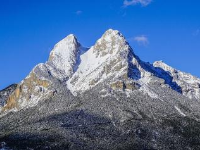 “On an institutional level, the greatest impact has been more work than ever,” says Josep Maria Martorell, associate director of the Barcelona Supercomputing Center. He says they’ve had many requests for shorter projects, given the urgency of the situation, but also more intense ones, so half of the supercomputer workload has been made up exclusively of Covid-19 projects. “One subject had never before taken up so much computational time in such a short period,” he says.
“On an institutional level, the greatest impact has been more work than ever,” says Josep Maria Martorell, associate director of the Barcelona Supercomputing Center. He says they’ve had many requests for shorter projects, given the urgency of the situation, but also more intense ones, so half of the supercomputer workload has been made up exclusively of Covid-19 projects. “One subject had never before taken up so much computational time in such a short period,” he says.
The CRG also saw activity peak due to SARS-CoV-2, participating in the Catalan Government’s Orfeu program for mass screening of the population. Serrano highlights the hard work of setting up a program to do 4,000 tests a day, from scratch, which was possible thanks to the “dedication of pre- and post-doc researchers who worked nights and weekends to make it happen.”
And at Reig Jofre, Amat explains they had to start making essential drugs again, which they had stopped making because they switched to buying them from Asian suppliers, like the sedative Midazolam and the antibiotic cephalosporin. “Luckily, our industry was able to respond,” she points out before adding that the crisis has shown that “agility and flexibility” are key for adapting and managing the pandemic.
But those who have suffered, quite literally, the most from the pandemic are healthcare professionals. “As a doctor, it has been an experience I hope to never relive,” says Rafael Máñez, head of Intensive Medicine at Bellvitge University Hospital who is heading up, through the Bellvitge Biomedical Research Institute (IDIBELL), one of the projects funded by the Government of Catalonia Department of Research and Innovation to identify a potential drug to help enable neutralizing antibodies against SARS-CoV-2. That hospital’s ICU went from 68 beds to 124 in just two weeks, with 108 for people in serious or very serious condition. “We put together several contingency plans, taking into account different stages, but from the second week of March we had to jump right to the final stage,” he explains.
Overcoming adversity
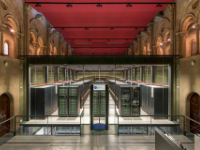 The impact of the virus also varied based on the type and size of the institution. Research at the BSC wasn’t affected because they have a “unique” way of working, Martorell says, but it did cast doubt on construction of the new building to house MareNostrum 5 in 2021. After being stopped for a few weeks, Martorell confirms “we will have this supercomputer in 2021.” “The European Commission quickly decided that everything had to keep going, except what was physically impossible, and the Spanish and Catalan governments passed budgetary measures during the lockdown,” he explains.
The impact of the virus also varied based on the type and size of the institution. Research at the BSC wasn’t affected because they have a “unique” way of working, Martorell says, but it did cast doubt on construction of the new building to house MareNostrum 5 in 2021. After being stopped for a few weeks, Martorell confirms “we will have this supercomputer in 2021.” “The European Commission quickly decided that everything had to keep going, except what was physically impossible, and the Spanish and Catalan governments passed budgetary measures during the lockdown,” he explains.
For his part, Serrano notes that the CRG stayed open for essential activities like animal maintenance and critical experiments, although the biggest hit has been the “hole in revenue” for science and technical services after being closed for three months. “August will be busier than normal, to make up for lost time with these services,” he explains.
The pandemic caught Aelix at a “very delicate” point in two clinical trials on their HIV vaccines. They set up a service with nurses specialized in clinical trials taking samples outside of the hospital setting, minimizing the risk of exposure. “But, at the same time, we found we didn’t have enough protective equipment and it was impossible to get more,” explains Cabero. The solution came from “friend” companies and institutions that gave them part of their stock, which meant they could continue according to plan in most cases.
Looking on the bright side
With all these contingency plans, lockdowns, financial black holes and stress, is there any room for positivity? Of course. “One month at home reading and thinking isn’t a bad thing. Sometimes it’s good to stop and reflect,” says Serrano. Many of the people we interviewed agree that the virus has shown us we probably travel more than we need to. “With virtual meetings, you lose the direct contact with your audience, discussion is less direct than in person, but once you get used to this it’s almost the same as before. And you save time, money and pollution,” reflects Lechuga.
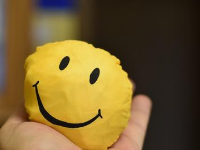
The same researcher remarks on another positive side effect of the pandemic: “It’s the first time we’ve put a name and face to scientists,” she says. This is due to the massive amount of information online and in the media. In this case, journalism gave us both high and low points. “There has been very serious, professional journalism, and other cases that were the total opposite. Without scientific training, sometimes things are given credibility out of ignorance. We need more training in science,” she believes.
Cabero puts the cherry on top, standing up for the scientific community’s reaction. “Never before had we seen a development like this: sequencing a virus on January 10 and, six months later, having at least 18 vaccines in clinical development and three or four companies developing monoclonal antibodies. The response of the scientific and clinical community, and the stakeholders who fund them, has been extraordinary. With the resources and the need, we can achieve incredible things,” he exclaims.
Lessons from the pandemic
All in all, the first half of 2020 has taught us lessons we’ll never forget. These include a motto both Lechuga and Martorell expressed with the same words: “Only science will get us out of this.” Máñez applies this message not only to the future, but also the past. “If we had done more research on SARS-CoV-1, it’s highly likely we’d have more tools. But researchers are driven by trends, because trends determine access to funding,” he decries.

And this applies in the industry as well. “If we had invested more in the local manufacturing industry, everything would have been easier,” Serrano says, adding mockingly, “Profit is important, but sending all our companies to China isn’t great.” And Amat agrees. “Prices drive this country, not boosting industry. And having a strong pharmaceutical industry is essential because it makes us more adaptable and more capable of handling pandemics, without depending on far-off markets,” she notes, also calling for the “government to commit” to local industry.
Lechuga also advocates for all the stakeholders in the ecosystem to come together and reflect. “Applied research and technology is more focused on publishing than making solid products that can be taken to market,” she explains. “We’ve been developing fast technology for many years, and the sector was always reluctant. But now we’ve seen that diagnosis is a massive bottleneck in managing the pandemic,” she says. Martorell adds, “People think a diagnostic test is something you can get at the supermarket, but it’s a high-tech device that exists thanks to advances in science. The simplest things, that people take for granted, exist thanks to science and technology.”
Hope for the best, prepare for the worst
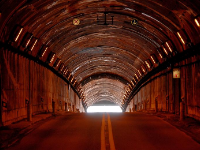
The majority opinion is that, regardless of how long the SARS-CoV-2 crisis lasts, another one will come along at some point. Sooner or later, we’ll have to be prepared if we don’t want it to throw us into another crisis. Lechuga, who is part of the multidisciplinary team advising the Spanish Ministry of Science and Innovation, advocates for a drastic change in the Spanish R&D system and warns that “the Spanish government’s emergency action plan comes up short.” “€50 million won’t solve 10 years of cutbacks,” Serrano confirms. “I hope I don’t have to keep arguing with administrations in the future about how to fund science,” says Martorell, who opens up a new front for debate with the Government: the use of data. “We have to take tragedies like this as opportunities for the government to lose its fear of using data for the common good. We can’t be so reticent to use mobility data to see how the pandemic spreads while at the same time being so generous with Google and Amazon,” he affirms.
They are all hoping and looking forward to going on vacation this August. In Catalonia, the islands or elsewhere on the peninsula. Nearby and probably not many days, but a necessary breather to disconnect and recharge batteries for the fall, and possibly further in the future, that awaits us. For them, the new normal is SARS-CoV-2, at work, too.


